In the ever-evolving landscape of digital products and services, ensuring a positive user experience is crucial for success. To achieve this goal, businesses and designers often rely on various metrics to assess and enhance the user experience. One such framework that has gained prominence is the HEART framework. Developed by Google, the HEART framework provides a structured approach to measuring and improving user experience based on key metrics. In this article, we will delve into the HEART framework, exploring its components and how organizations can leverage it to enhance their products and services.
Part 1. HEART Framework Overview
The HEART Framework is a user experience (UX) evaluation framework used to measure the quality of user experience in products and services. It was developed by Google to help teams assess and improve the user experience of their products. The acronym "HEART" stands for five key metrics that are considered important indicators of user experience.
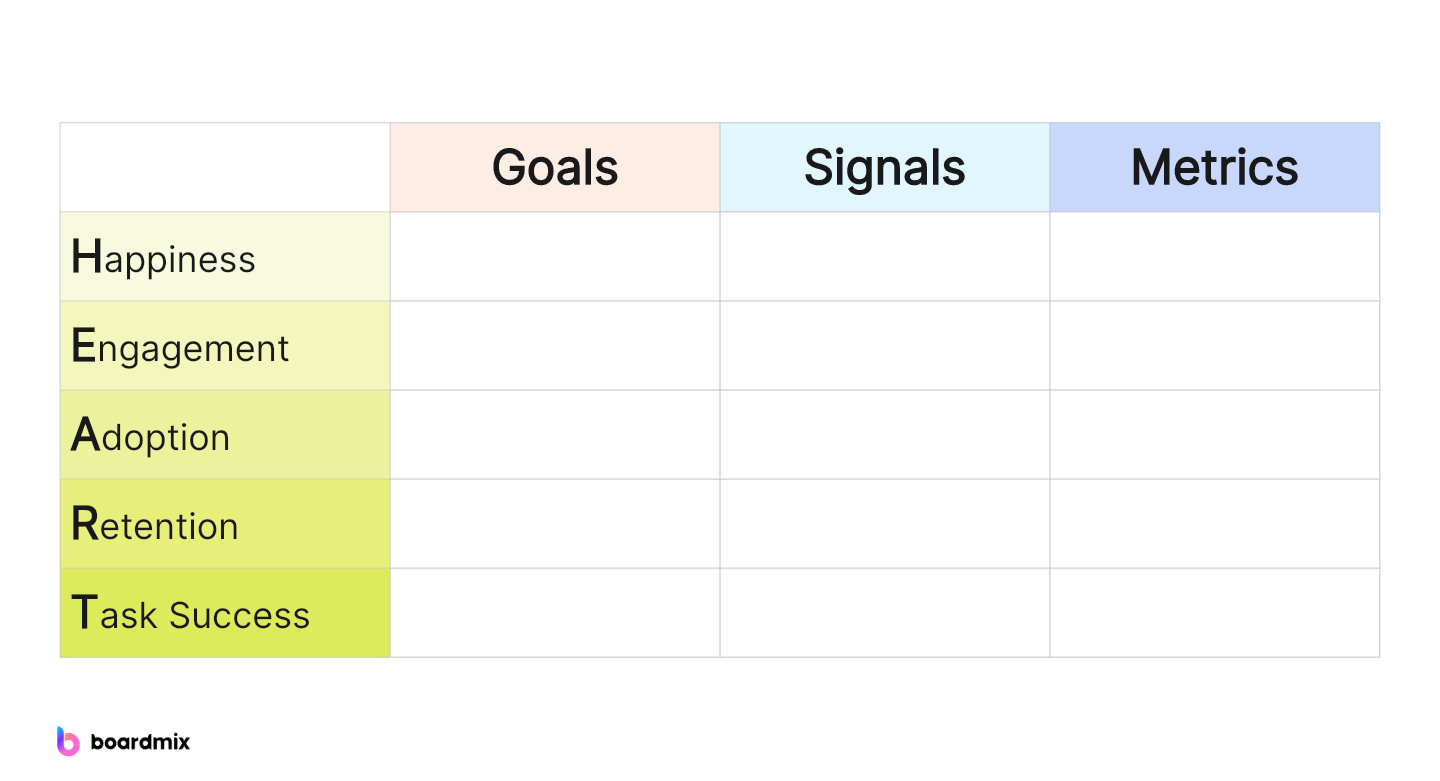
The HEART Framework is often used in combination with the Goals-Signals-Metrics process, where teams define specific goals, identify signals that indicate progress toward those goals, and then select measurable metrics to track those signals.
The origin of the HEART Framework can be traced back to a Google research paper titled "Sixteen Ways To Measure Your Impact," which was presented at the CHI 2010 conference. The paper provided insights into various methods and metrics for evaluating user experience. Over time, Google refined these ideas, leading to the development of the HEART Framework as a practical tool for UX evaluation.
Part 2. 5 Metrics of HEART Framework
The HEART Framework consists of five key metrics, each corresponding to a different aspect of user experience. The acronym HEART represents these metrics:

Happiness: This metric focuses on overall user satisfaction and happiness. It is often measured through surveys, feedback forms, or other methods to understand users' feelings and perceptions about a product or service.
Engagement: Engagement measures the level of user involvement and interaction with a product. It includes metrics such as the frequency of use, time spent on the platform, or the number of interactions. Higher engagement generally indicates that users find value and interest in the product.
Adoption: Adoption refers to the process of acquiring new users and growing the user base. This metric helps assess how successful a product is in attracting and onboarding new users.
Retention: Retention measures the ability of a product to retain its existing users over time. High retention rates indicate that users find ongoing value and continue to use the product over an extended period.
Task Success: Task success evaluates how effectively users can accomplish their goals or tasks within a product. It measures usability and efficiency, focusing on the user interface and overall user experience during task completion.
These metrics provide a comprehensive view of the user experience, covering satisfaction, engagement, growth, retention, and usability aspects. The HEART Framework, in combination with the Goals-Signals-Metrics process, helps teams set specific goals, identify signals that indicate progress toward those goals, and choose measurable metrics for evaluation and improvement.
Part 3. How Does the HEART Framework Work?
The HEART Framework works by providing a structured approach to measuring and improving user experience through five key metrics: Happiness, Engagement, Adoption, Retention, and Task Success. Here's a step-by-step guide on how the HEART Framework operates:
Step 1. Define Goals and Signals: Clearly outline your product or service goals and identify signals that indicate progress or issues.
Step 2. Select HEART Metrics: Choose from the HEART metrics (Happiness, Engagement, Adoption, Retention, Task Success) that align with your goals and signals.
Step 3. Implement Measurement Methods: Put in place tools and processes to collect data on the selected metrics, using surveys, analytics, or other relevant methods.
Step 4. Analyze Data and Iterate: Regularly analyze the collected data, draw insights, and iteratively improve your product or service based on the findings.
Step 5. Monitor and Communicate: Continuously monitor the selected metrics, adapt strategies as needed, and communicate results with relevant stakeholders to ensure a shared understanding of progress and goals.
By following these steps, teams can systematically assess and enhance the user experience of their products or services, leading to improved satisfaction, engagement, adoption, retention, and task success. The HEART Framework provides a holistic and actionable approach to user experience evaluation and improvement.
Part 4. Benefits of Using HEART Framework
The HEART Framework offers several benefits for teams and organizations focused on improving user experience. Here are some key advantages:
1. Comprehensive User Experience Measurement:
The HEART Framework provides a holistic approach by encompassing multiple dimensions of user experience, including satisfaction, engagement, adoption, retention, and task success. This comprehensive view allows teams to address various aspects of user interaction.
2. Clear Alignment with Goals:
By defining specific goals and selecting corresponding metrics, the HEART Framework ensures that efforts are aligned with overall business objectives. This alignment helps teams prioritize initiatives that have a direct impact on achieving desired outcomes.
3. Quantifiable and Measurable Metrics:
The selected metrics within the HEART Framework are quantifiable and measurable, allowing teams to track progress over time. This enables data-driven decision-making and provides a basis for setting benchmarks and targets.
4. User-Centric Focus:
The HEART Framework places a strong emphasis on understanding and improving the user experience. By incorporating metrics like happiness and task success, it encourages teams to prioritize user satisfaction, engagement, and usability in their design and development processes.
5. Facilitation of Cross-Functional Collaboration:
The framework encourages collaboration across different teams and departments, as it requires input from product managers, designers, developers, and other stakeholders. This cross-functional collaboration fosters a shared understanding of user experience goals and the importance of achieving them.
Part 5. Best HEART Framework Builder – Boardmix
Boardmix is a revolutionary online whiteboard tool that serves as an efficient HEART framework builder. It's designed to facilitate user-centric product development by providing a platform for creating and visualizing Goals-Signals-Metrics (GSM) frameworks. With Boardmix, you can effectively map out user journeys, identify key metrics, and track progress towards your goals. Its intuitive interface and extensive library of drawing templates make it easy for teams to collaborate in real-time, regardless of their location. Whether you're brainstorming new ideas or refining existing ones, Boardmix is the perfect tool to help you keep the focus on your users and deliver products that truly resonate with them.
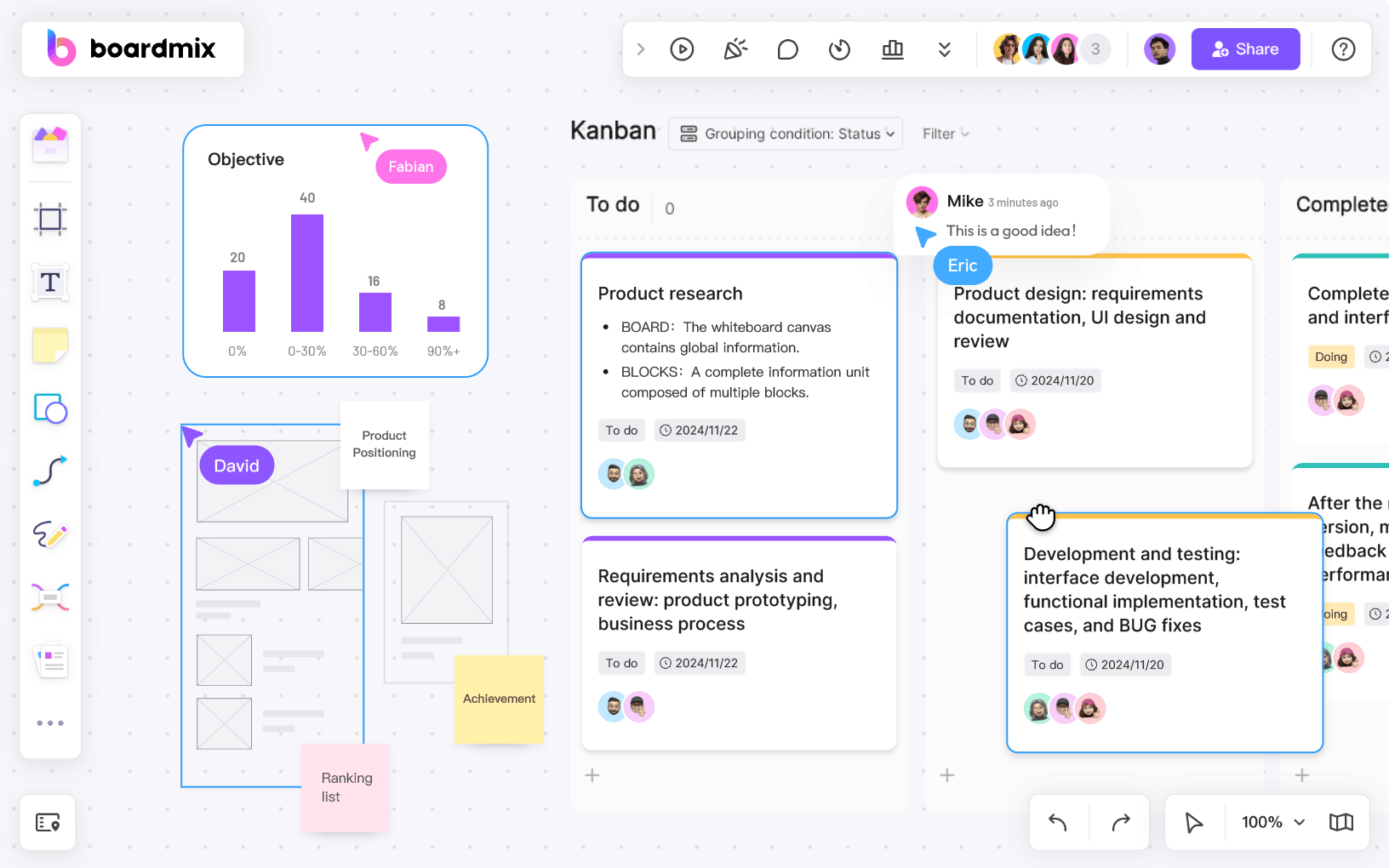
Why Boardmix the Best HEART Framework Creator?
- Real-Time Collaboration: Boardmix allows multiple users to work on the same whiteboard simultaneously, enabling seamless team collaboration regardless of location.
- Extensive Template Library: With a wide range of pre-designed templates, Boardmix makes it easy to start any project, from brainstorming sessions to HEART framework creation.
- Interactive Elements: Boardmix offers interactive elements like sticky notes, shapes, lines and text tools that make visualizing ideas and concepts simple and effective.
- Commenting and Annotation: Users can leave comments or annotate directly on the board for clear communication and feedback.
- Easy Sharing & Exporting: Boards can be easily shared with team members or stakeholders via a link, and exported in various formats for offline use or presentations.
- User-Friendly Interface: The intuitive interface of Boardmix ensures a minimal learning curve, allowing teams to get started quickly.
Creating a HEART framework with Boardmix is a straightforward process. Here's how you can do it:
Step 1. Start by opening Boardmix and selecting a new blank canvas or choose from one of the many pre-designed templates.
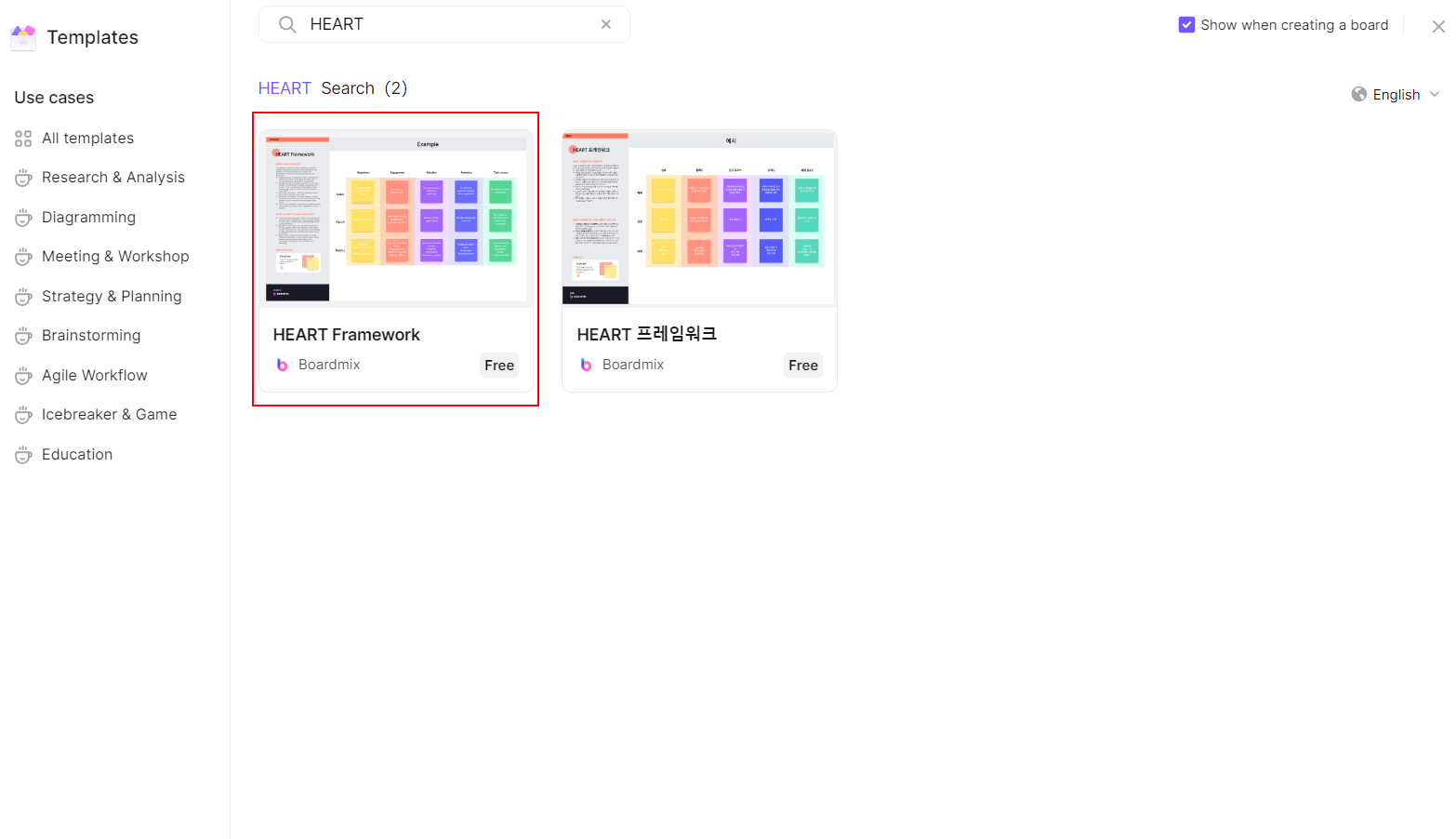
Step 2. Define your Goals: Use the text tool to write down your product's key goals. These could be improving user experience, increasing engagement, etc.
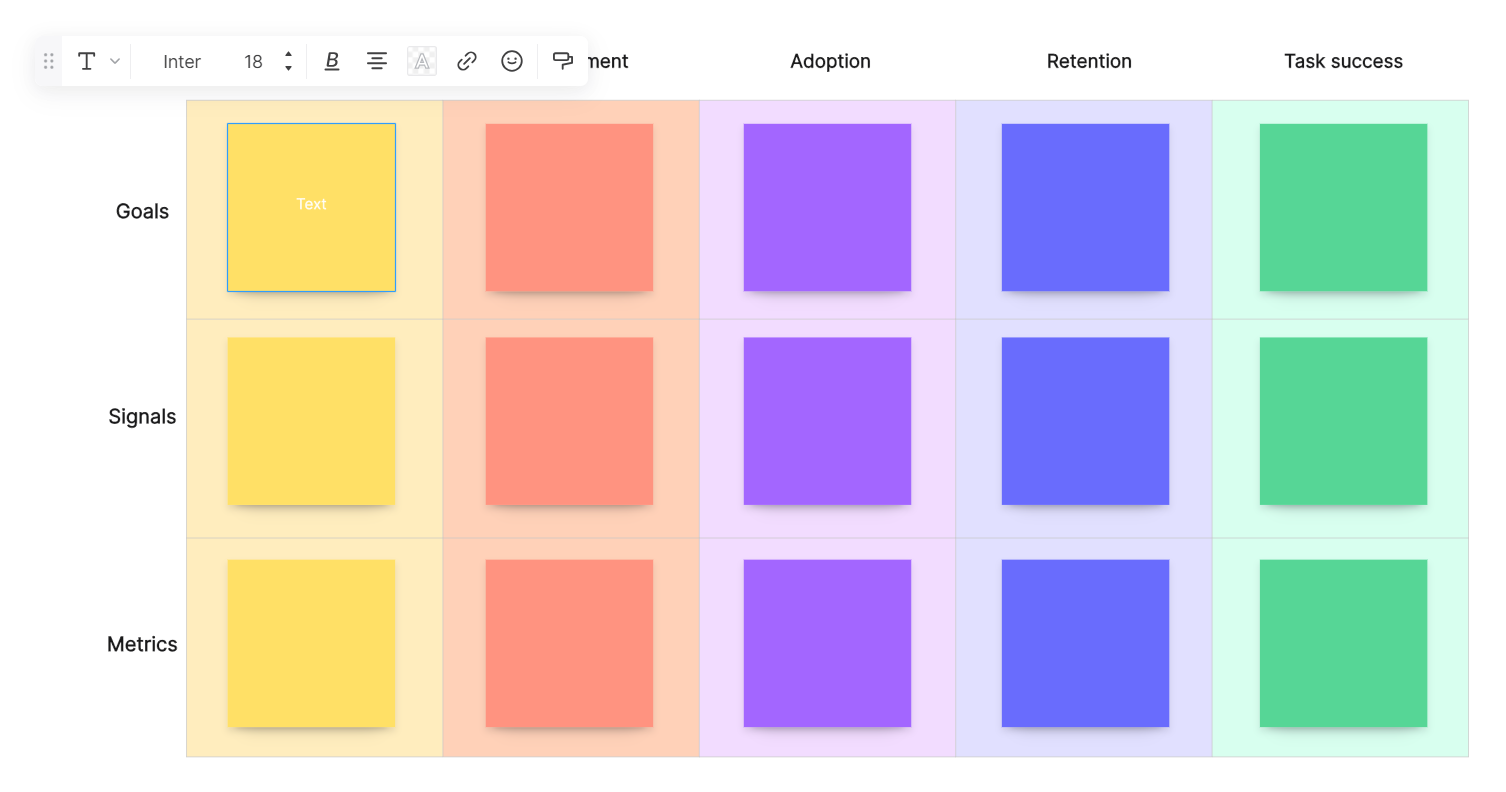
Step 3. Identify Signals: For each goal, identify signals that indicate success or failure. Use different shapes or colors to distinguish between positive and negative signals.
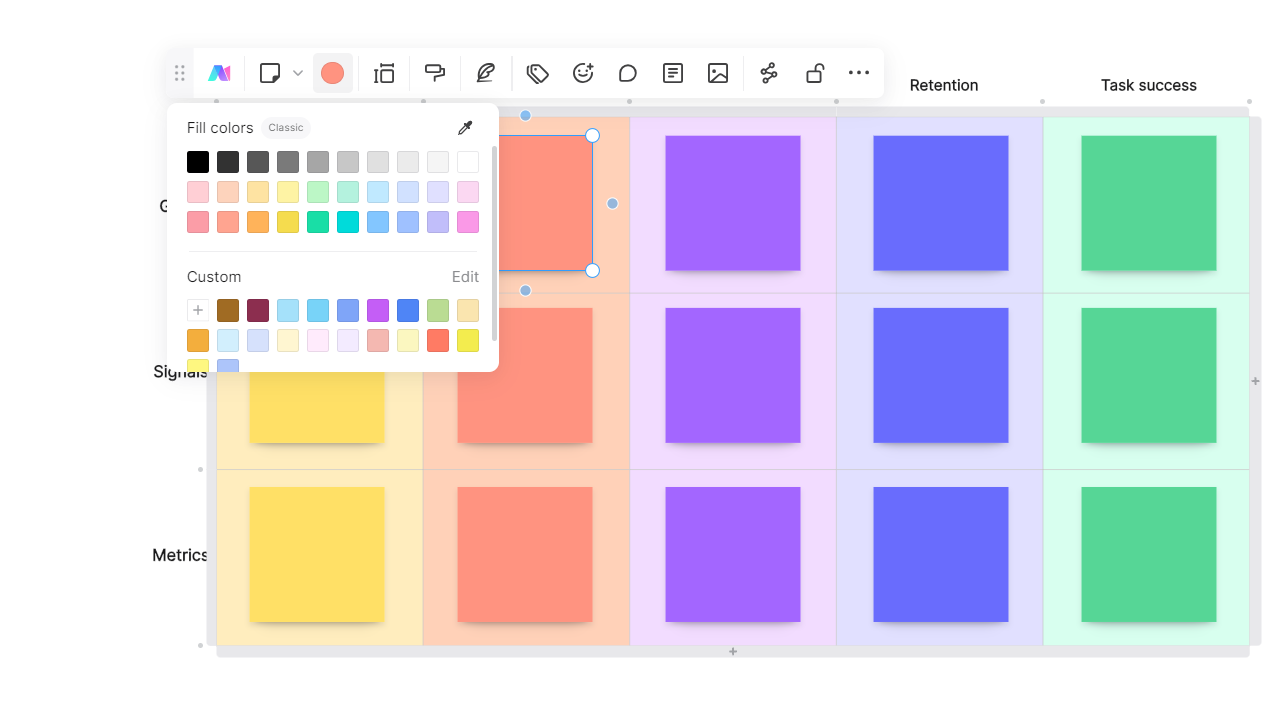
Step 4. Determine Metrics: For each signal, determine the metrics you'll use to measure progress. You can use arrows or lines to connect these metrics to their corresponding signals.
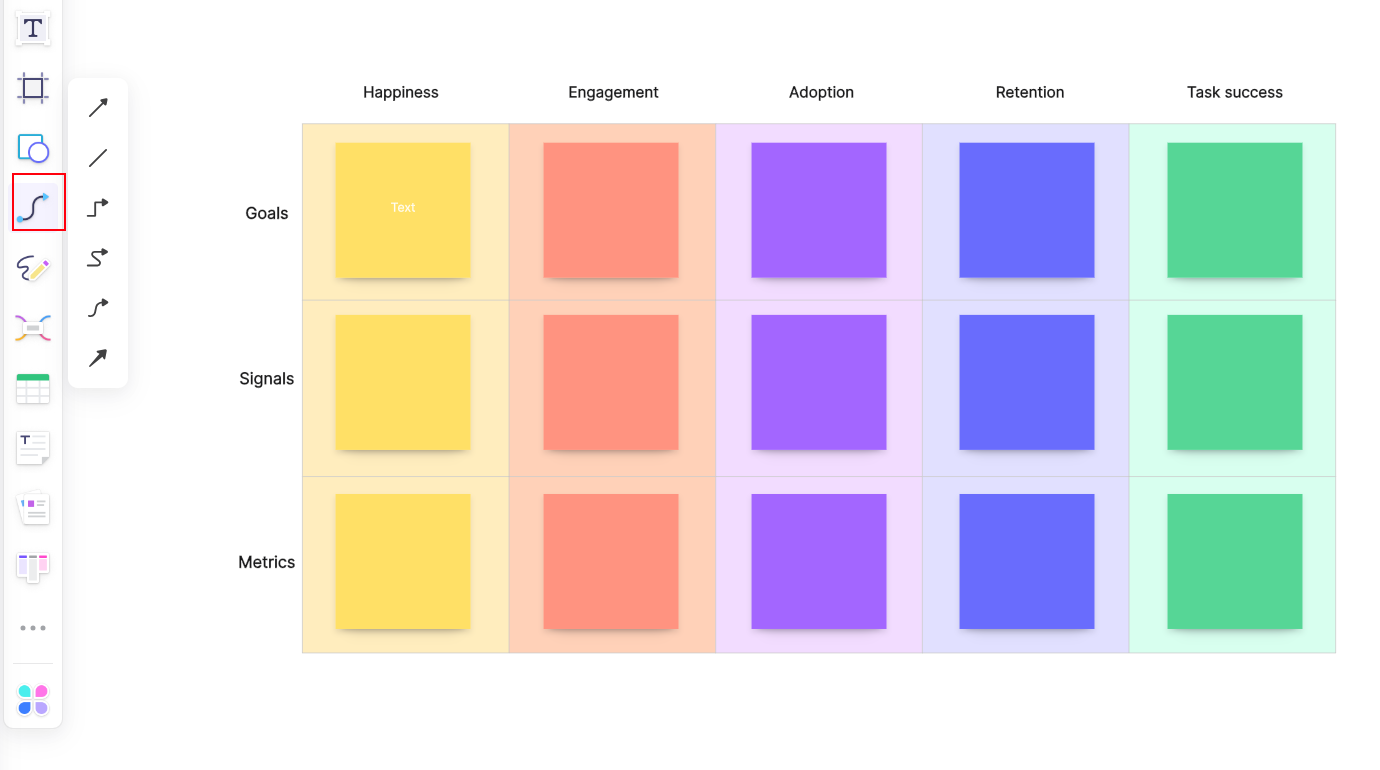
Step 5. Collaborate & Refine: Invite team members to join the board and collaborate in real-time. They can add comments, make suggestions, or even draw their own elements on the board.

Step 6. Track Progress: Regularly update your HEART framework with actual data and track progress towards your goals over time.
Conclusion
The HEART framework offers a comprehensive and user-centric approach to measuring and improving the user experience. By focusing on Happiness, Engagement, Adoption, Retention, and Task Success, organizations can gain valuable insights into user satisfaction and identify areas for enhancement. As digital landscapes continue to evolve, the HEART framework stands as a valuable tool for organizations seeking to create products and services that resonate with their users.
Experience the power of visual collaboration with Boardmix and create your HEART framework in a seamless, intuitive way. Don't wait, start using Boardmix today and transform the way you build and refine your HEART framework!













